by Howard Gardner
Sometimes, you know something—or think that you know something—and then you confront the limits of your knowledge. Or, to put it less kindly, then you have an experience that reveals your ignorance.
As someone with some knowledge about the history of higher education in the United States, I knew that nearly all colleges had begun as religious institutions. I was also aware that in the last century or so, the religious mission had waned and that, indeed, the overwhelming majority of colleges and universities of which I’m aware are essentially, or primarily secular.
If you had asked me a decade ago for my views about this situation I would have been quite accepting. I am secular myself; Harvard, the school with which I have long been associated, shed its religious ties many years ago.
But as a result of a ten-year study of American higher education, carried out with my long-time colleague Wendy Fischman, I now think quite differently about this situation. I now believe that there’s a lot to be said in favor of colleges and universities that have a stated mission. Moreover, that mission might well be religious—though it could also have other aspirations, for example, training members of the military (West Point and Annapolis) or foregrounding certain demographies, such as historically Black institutions.
I’ve come to this conclusion because—to put it sharply—too many of our students do not understand the major reason(s) why we have non-vocational institutions of higher learning. Many students are inertial (“Well, after you finish high school, you go to college”) or transactional (“you go to college so that you can get a good job”). Of course, some institutions describe themselves as primarily vocational—whether that vocation is engineering, or pharmacy, or nursing—and that’s fine. Truth in advertising! But if you call yourself a liberal arts school or a general education school, you have taken on the obligation to survey a wide swathe of knowledge and expose students to many ways of thinking: in our terminology, to get students to explore and to be open to transformation of how they think of themselves and how they make sense of the world.
Of course, many viable missions are non-sectarian and worth making central to one’s education. For example, a school might organize itself around democracy/civics; or community service; or global understanding. Indeed, the recently launched London Interdisciplinary School is directed toward understanding and solving global problems while San Francisco-headquartered Minerva University seeks to expose students to global knowledge and experience.
Not so for most schools!
In the course of our research, Wendy Fischman and I have made a discovery—one related to the quickly-sketched history of higher education in this country. Our interviews with over 1000 students drawn from ten different schools revealed an ethical void: even when asked directly, most students do not recognize any experiences that they would consider ethical dilemmas. And accordingly, they give no indication of how they think about them, reflect on them, attempt to take concrete steps toward constructive solutions and resolutions. Accordingly, in our current work, we strive to make ethical understanding and decision making central in the experience of college students.
Back to my recently discovered area of ignorance:
I have long known, and admired from afar, Julie Reuben’s 1996 book The Making of the Modern University. Drawing particularly on documents from eight major American colleges/universities, this elegant historical study reviews the century of dramatic change in the teaching, curricula, and over-arching conception of higher education in the United States.
I can’t presume to capture the highlights of a 300-page book—one based on careful study of numerous academic and topical sources and documented in hundreds of footnotes. But I can assert that over the course of a century, after many attempts at compromise, most institutions of higher education in the United States became essentially secular; they dropped explicit religious study from their teaching and their curricula and at the same time dropped any explicit focus, on ethical issues in the school’s explicit (or even tacit) mission.
So at the risk of caricature, here ‘s the rough set of stages (no doubt, overlapping) through which America higher education passed:
Most schools are religious in orientation, students take religious courses, the faculty and the president take on responsibility for religious “formation”: many students are training for the ministry; truth is seen as indissociable from the good. A concern with ethics is subsumed under the religious focus.
American colleges are deeply affected by the examples of major universities in Europe: flagship American campuses add doctoral studies, professional degrees, technically trained faculty across the disciplinary terrain, but these institutions still seek to maintain a religious formative creed; accordingly Darwinian ideas are highly controversial.
Curricula offer more choices; sciences play an ever-larger role (focus on method as well as findings)—Darwinian ideas are increasingly accepted; with increasing competition for outstanding faculty, the role of the president becomes less ethically-centered, less involved in curricula, more political, administrative, fund-raising.
Explicitly religious courses and curricula wane (students also show less interest in these topics); there is tension between religious and intellectual orientations; efforts are made to foster ethical and moral conduct and behavior without explicit ties to specific religion(s); morality is seen as a secular, not just a religious preoccupation.
Science is increasingly seen as value-free; educators look toward social sciences and humanities for the understanding of ethical and moral issues, and their inculcation (as appropriate) in students; morality is seen increasingly in behavioral rather than belief terms.
The pursuit of the true, long a primary educational goal, is now separated—quite decisively—from the inculcation of a sense of beauty or of morality (the good)—and schools aspire to cultivate these latter virtues; these virtues can be acquired both in class and via extra-curricular activities (also via dormitory life); faculty are held accountable for their own ethical behavior.
Faculty and curricula are no longer seen as primary vehicles for a sense of morality and ethics; accordingly, ethically-oriented curricula are either actively removed or simply wane from the offerings of secular schools.
Behold—the modern, secular university.
All of this happens over—roughly—a century.
In this country, we are now left with a higher education system where ethics and morality are seen as “someone else’s concerns”. As well, we have students—and (as our study documents) other constituencies as well—whose ethical antennae are not stimulated, and may even have been allowed to atrophy.
Hence the Humpty-Dumpty challenge: can these values, these virtues, be re-integrated in our system of higher education?
Were we to live in a society where ethics and morality were well handled by religious and/or civic institutions, the situation ascribed to higher education would not be lamentable. Alas, that’s not the case! And while it is impractical and perhaps even wrong-headed to expect our colleges and universities to pick up all the slack, they certainly need to do their part.
And that includes us!
For helpful comments on an earlier draft, I think Shinri Furuzawa and Ellen Winner. For support of our current work, we thank the Kern Family Foundation.
References
Fischman, W., and Gardner, H. (2022). The Real World of college: What higher education is and what it can be. MIT Press.
Reuben, J. A. (1996) The Making of the Modern University: Intellectual transformation and the marginalization of morality. University of Chicago Press.





















